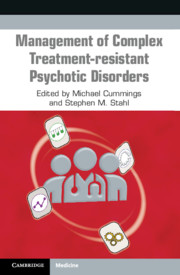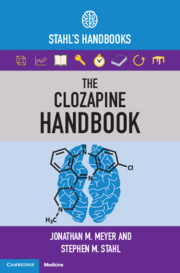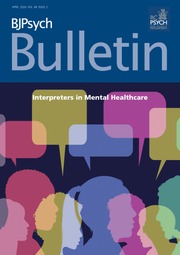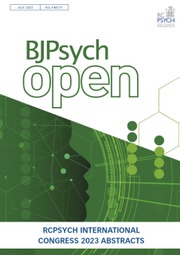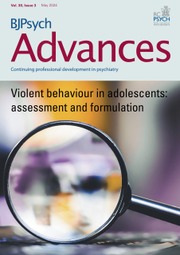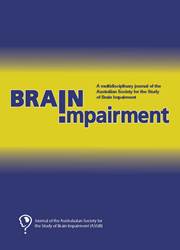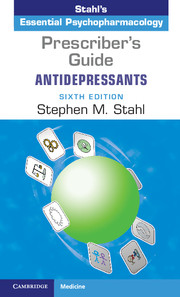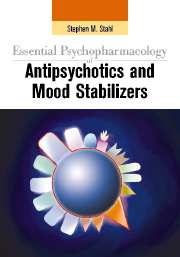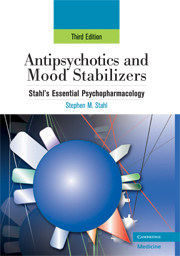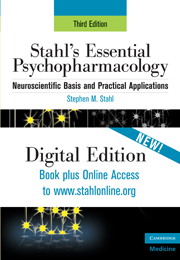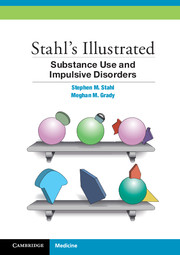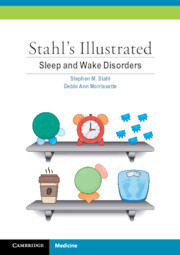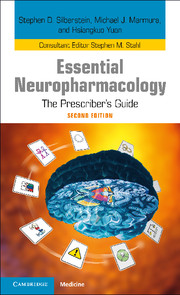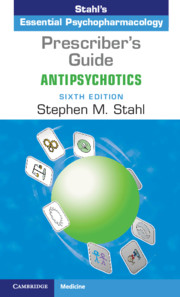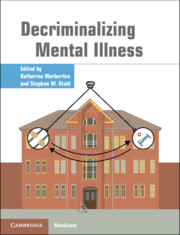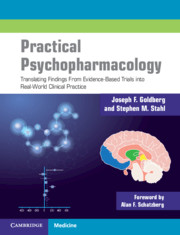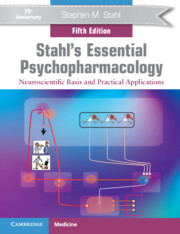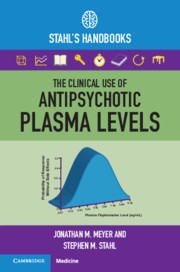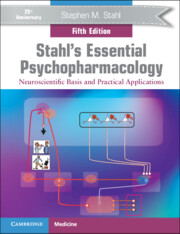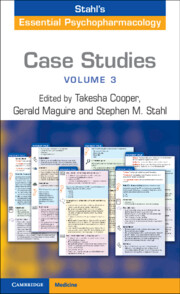Management of Complex Treatment-resistant Psychotic Disorders
£41.99
- Editors:
- Michael Cummings, University of California, Los Angeles
- Stephen Stahl, University of California, San Diego
- Date Published: August 2021
- availability: Available
- format: Paperback
- isbn: 9781108965682
£
41.99
Paperback
Other available formats:
eBook
Looking for an inspection copy?
This title is not currently available on inspection
-
This full-color, practical handbook provides a concise, evidence-based psychopharmacological approach to the management of complex treatment-resistant psychotic disorders. Part I focuses uniquely on topics and strategies relevant to treating this challenging patient population. These approaches go beyond standard guidelines while adhering to research and clinically derived data. Part II provides a concise array of information regarding those classes of medications most commonly used when treating complex treatment-resistant psychotic disorders. Each medication guide contains sections including mechanisms of action, typical treatment response, monitoring, dosing and kinetics, medications to avoid in combination/warnings, and take-home pearls. Part III offers tips in brief appendix chapters for managing common issues ranging from loading lithium and valproic acid to the treatment of acute psychomotor agitation. An essential resource for psychiatrists, forensic clinicians, psychiatric trainees, and all mental health professionals involved with, or interested in, the treatment of challenging psychotic disorders.
Read more- Presents a much-needed evidence-based psychopharmacological approach to the management of complex treatment-resistant psychotic disorders, covering important topics such as depressed and suicidal schizophrenic patients and the treatment of traumatic brain injuries and neurocognitive disorders
- Offers a compact, easily-accessible bank of information on the pharmacological agents most commonly used in treating complex treatment-resistant patients for both students and professionals
- Brief appendix chapters address the commonly encountered pharmacological issues involved in treating psychotic disorders
Reviews & endorsements
'The book is clearly useful for medical students, residents, and young psychiatrists.' Michael Easton, Doody's Notes
Customer reviews
Review was not posted due to profanity
×Product details
- Date Published: August 2021
- format: Paperback
- isbn: 9781108965682
- length: 538 pages
- dimensions: 227 x 137 x 23 mm
- weight: 0.88kg
- availability: Available
Table of Contents
Part I. Treatment Strategies:
1.01. Approaches to positive Psychotic symptoms
1.02. Use of plasma levels in Antipsychotic and Mood Stabilizer treatment
1.03. Advantages of long-acting injectable Antipsychotics
1.04. Approach to Schizophrenia Spectrum treatment-resistant patients
1.05. Approach to depressed or suicidal Schizophrenia Spectrum patients
1.06. Approach to persistent aggression and violence in Schizophrenia Spectrum Disorders
1.07. Approach to treatment of Bipolar Diathesis in Schizophrenia Spectrum patients
1.08. Approach to Anxiety in Schizophrenia Spectrum patients
1.09. Approach to Insomnia and Sleep Disturbance in Schizophrenia Spectrum disorders
1.10. Approach to Psychosis in children and adolescents
1.11. Electro-convulsive therapy and other Non-pharmacological treatments
1.12. Approach to substance use disorders in Schizophrenia Spectrum Disorders
1.13. Approaches to Behavioral Disturbances and Dementia and TBI patients
Part II. Medication Reference Tables: First-generation (Typical) Antipsychotics:
2.01. Chlorpromazine
2.02. Fluphenazine
2.03. Haloperidol
2.04. Loxapine
2.05. Perphenazine
2.06. Thiothixene
2.07. Trifluoperazine
Second-generation (Atypical) Antipsychotics:
2.08. Asenapine
2.09. Clozapine
2.10. Iloperidone
2.11. Lumateperone
2.12. Lurasidone
2.13. Olanzapine
2.14. Paliperidone
2.15. Quetiapine
2.16. Risperidone
2.17. Ziprasidone
Dopamine Partial Agonist Antipsychotics (Arias):
2.18. Aripiprazole
2.19. Brexpiprazole
2.20. Cariprazine
Medications for Motor/Neurologic Adverse Effects:
2.21. Amantadine
2.22. Benztropine
2.23. Diphenhydramine
2.24. Trihexyphenidyl
Mood Stabilizers:
2.25. Carbamazepine
2.26. Lamotrigine
2.27. Lithium
2.28. Valproic Acid
Selective Serotonin Reuptake Inhibitor (SSRI) Antidepressants:
2.29. Citalopram
2.30. Escitalopram
2.31. Fluoxetine
2.32. Fluvoxamine
2.33. Paroxetine
2.34. Sertraline: SSRI/5HT-1 Partial Agonist Antidepressants:
2.35. Vilazodone
2.36. Vortioxetine
Serotonin/Norepinephrine Reuptake Inhibitor (SNRI) Antidepressants
2.37. Desvenlafaxine
2.38. Duloxetine
2.39. Levomilnacipran
2.40. Venlafaxine
Mixed Mechanism Antidepressants:
2.41. Bupropion
2.42. Mirtazapine
2.43. Trazodone
Tricyclic Antidepressants:
2.44. Amitriptyline
2.45. Clomipramine
2.46. Desipramine
2.47. Doxepin
2.48. Imipramine
2.49. Nortriptyline
Monoamine Oxidase Inhibitor (MAOI) Antidepressants:
2.50. Isocarboxazid
2.51. Moclobemide
2.52. Phenelzine
2.53. Transdermal Segeliline
2.54. Tranylcypromine
Anxiolytics:
2.55. Alprazolam
2.56. Buspirone
2.57. Clonazepam
2.58. Diazepam
2.59. Hydroxyzine
2.60. Lorazepam
Sedatives:
2.61. Diphenhydramine
2.62. Eszopiclone
2.63. Hydroxyzine
2.64. Lorazepam
2.65. Oxazepam
2.66. Temazepam
2.67. Zaleplon
2.68. Zolpidem
Circadian Regulators:
2.69. Melatonin
2.70. Ramelteon
2.71. Tasimelteon
Stimulants:
2.72. Atomoxetine
2.73. Dextroamphetamine
2.74. Lisdexamphetamine
2.75. Methylphenidate
2.76. Mixed Amphetamine Salts: Histaminic Stimulants:
2.77. Armodafinil
2.78. Modafinil
Cognitive Agents:
2.79. Dextromethorphan/quinidine
2.80. Donepizil
2.81. Galantamine
2.82. Memantine
2.83. Rivastigmine
Alpha2-adrenergic Agonists:
2.84. Clonidine
2.85. Guanfacine
Appendices:
3.01. Optimal Antipsychotic Plasma Concentration Ranges
3.02. Optimal Mood Stabilizer Plasma Concentration Ranges
3.03. Formulas for QT Interval Correction
3.04. Common Cytochrome P-450 Inducers and Inhibitors
3.05. Management of Constipation
3.06. Child-Pugh Hepatic Function Scoring
3.07. Loading of Lithium and Valproic Acid
3.08. Treatment of Prolactin Elevation
3.09. A Select List of Foods High in Tyramine
3.10. Medications that Present Risk for Serotonin Syndrome when Combined with MAOIs
3.11. Selected Treatment of Psychomotor Agitation.
Sorry, this resource is locked
Please register or sign in to request access. If you are having problems accessing these resources please email [email protected]
Register Sign in» Proceed
You are now leaving the Cambridge University Press website. Your eBook purchase and download will be completed by our partner www.ebooks.com. Please see the permission section of the www.ebooks.com catalogue page for details of the print & copy limits on our eBooks.
Continue ×Are you sure you want to delete your account?
This cannot be undone.
Thank you for your feedback which will help us improve our service.
If you requested a response, we will make sure to get back to you shortly.
×
